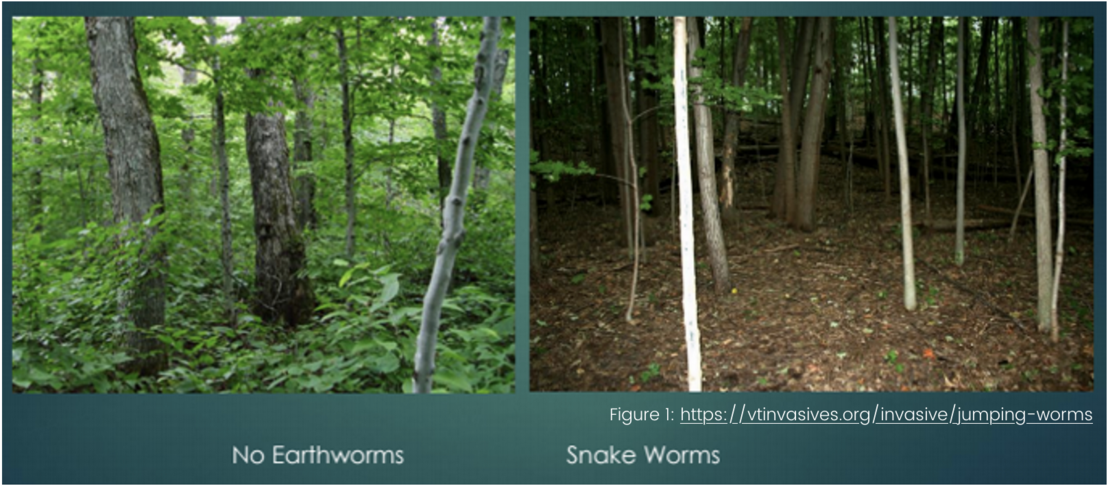Transplanting Thoughtfully
In 2023, we are blessed to have countless choices when we want to accentuate our landscapes. You can introduce almost anything into our (natural) communities--whether sowing seed, removing a plant from a container, or digging a hole to erect a new tree. Perhaps you are thinking about transplanting plants from another property you may own; we encourage you take a moment to consider what else you might be establishing… an unintentional transplant.
Many gardeners will gladly remove an earthworm out of a shovel’s trajectory or feel remorse when inadvertently cutting one in half, however in the forest floor they are not nearly as loveable. They’re cultivators who devour the duff of the forest floor–the crucial ‘mulch’ of our woods, and this poses an ecological threat to tree regeneration. Historically, earthworms followed European agriculture as it established in the state. Earthworms won’t be eradicated from our forests, but we can help halt their spread. A new tenacious wriggly worm worth stopping is the invasive ‘Jumping’ or ‘Snake’ worm. The Jumping worm is non-native (like all Vermont earthworms) and consumes organic matter quite rapidly, note the lack of understory in Figure 1 above. What can be done? Prevent spread through community awareness and best management practices. Please check out Jumping Worm details here.
Considerations for transplanting thoughtfully and preventing an unintended introduction of worms or other ecological disruptors (with collaboration from Ben Dillner, VT Agency of Agriculture, Food & Markets):
- Planting a potted/container plant? Is there anything else growing in it, besides the labeled plant? Are there any seeds from noxious weeds in the pot? Is it native and does it have ecosystem benefits?
- Could we forego the soil medium and plant a bare root (dormant) plant or from seed instead?
- Ensure that plants don’t have worms, eggs, boring insects, or other type of pest that we don’t want to introduce to our (natural) community.
- Use pest free compost/mulch or solarize materials before using for transplanting.
- Clean garden tools, boots and equipment when moving from one location to another.
- Learn to identify major invasive species and how to control them; vtinvasives.org is a great resource.
Our plant nurseries are regulated to prevent the movement of pests such as plant pathogens, insects, mites and noxious weeds that are harmful to our landscapes – please support them and assist them in keeping our interdependency balanced. Hopefully we’ll be just as judicious about moving plants as we are about firewood-- they harbor just as many risks to our forests.
Citations:
Brown, Joshua E. “Earthworm Invasion.” The University of Vermont, 10 Sept. 2013.
“Plant Health and Pest Management.” Agency of Agriculture Food and Markets.
“Vermont Invasives.” Jumping Worms | Vermont Invasives.
